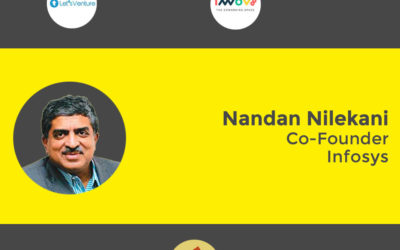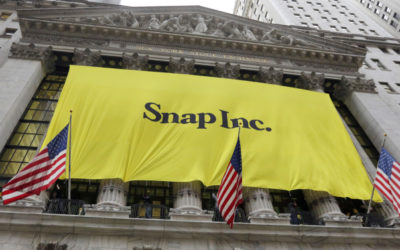Transfix keeps on truckin’, with $42 million in fresh funding led by NEA
Transfix keeps on truckin’, with $42 million in fresh funding led by NEA.
When we last checked in on Transfix in late 2015, the then two-year-old, 26-person, New York-based transportation startup was determined to use its tech to increasingly match customers needing interstate freight shipping with truck drivers needing to make deliveries.
It wanted to cut out wasted travel, not to mention greenhouse gas emissions.
The company has been chugging along ever since, evidently.
Transfix, which now employs 110 people, just closed on $42 million in Series C funding led by previous backer New Enterprise Associates, with participation from unnamed strategic investors with “strong ties to the retail and logistics world,” says the company.
Altogether, it has now raised $78.5 million, including from earlier backers Canvas Ventures, Lerer Hippeau Ventures and Bowery Capital.
Transfix says its fleet management system does a whole lot of things, including enables users to track shipments, SMS drivers, receive alerts when a shipment will be delayed and calculate drivers’ fuel taxes.
It says its transaction time is now almost half what it was back in 2015, too.
We asked Transfix about paying truckers ahead of when vendors would pay them.
When we’d last spoken, it was a small but growing part of the company’s business, and at least one competitor, Trucker Path, recently lined up $30 million in debt to lend to truckers on its platform.
326 Angel Investors Participated In Indian Tech Startup Funding In H1 2017
326 Angel Investors Participated In Indian Tech Startup Funding In H1 2017.
Advertisement According to Inc42 DataLabs, since H1 2015, over 1668 unique angel investors have participated in the Indian tech startup funding.
Though most of the angel investors have participated in a single deal, if we look at the historical data of startup funding in India, since H1, 2015, over 127 angel investors participated in more than three deals and about 560 Angel investors participated in more than one deal.
Angel investors play an important role in the growth of startups.
Being the first investor in the company, they guide startups in their initial journey and help them raise the first institutional round.
A few years back, angel investing was more about HNIs (high net-worth individuals) investing in startups but, in the past few years, more and more entrepreneurs have boarded the angel investing bandwagon.
In this article, we would like to highlight the top angels who participated in Indian tech startup funding in H1 2017, based on the number of deals they participated in and were publicly disclosed.
Here is a brief overview of top seven angel investors and the details of the startups they invested in: Here is a brief overview of top seven angel investors and the details of the startups they invested in: #Rank1 Girish Mathrubootham, CEO & Founder, Freshdesk – Whatfix, The Ken, Innov8, GoBumpr and iService #Rank2 Rajan Anandan, VP & MD, SEA & India, Google – Lucideus, Omnify, Innov8, and Wishberry #Rank2 Anand Chandrasekaran, Director, Head of Platform & Product Partnerships, Facebook – Uncanny Vision, Fynd, LetsVenture and Innov8 #Rank3 Nandan Nilekani, Co-Founder, Infosys – The Print, 4tigo and Ninjacart #Rank3 Gokul Rajaram, Product Engineering Lead, Square – CureFit, Squad and Whatfix #Rank3 Kunal Shah, Freecharge (now part of Sequoia Capital) – Spinny, Lets Reap and Innov8 #Rank3 V Balakrishnan, Infosys – GSTSTAR, Absentia and TaxSutra This article is part of Inc42’s Indian Tech Startup Funding Report, released this week.
As per the report, about $5.56 Bn was invested across 452 Indian tech startups during the period January-June 2017.
In the next article of this series, we will be highlighting the top VC firms that participated in Indian Tech startup funding.
Snap Shares Tumble Further Below IPO Price — Update
Snap Shares Tumble Further Below IPO Price — Update.
In late June, meal-delivery startup Blue Apron Holdings Inc. struggled to find buyers in its stock offering, priced its shares below its initial expectations, and has remained under its IPO price since its second day of trading.
Snap’s decline on Tuesday came as analysts at Morgan Stanley, one of the lead underwriters on Snap’s IPO, downgraded the company to equal weight from overweight and cut their price target from $28 a share to $16 apiece.
Morgan Stanley’s new rating suggests holding on to shares of Snap at a price of $16.
Morgan Stanley added that, as a result, it expects Snap’s ad revenue growth to be “materially slower” than it previously expected.
Meanwhile, Blue Apron’s stock dropped 11% to $7.23 in recent trading Tuesday, falling further from its $10 IPO price.
The tech sector rose 0.3% in recent trading.
As of July 7, 45% of U.S.-listed companies that went public in 2017 have closed below their IPO prices at some point.
More than one-third were still below as of July 7, according to Dealogic.
Another sign investors may be betting against Blue Apron and Snap: Traders are buying options contracts that tend to pay out on declines in the underlying stock.
Snapchat IPO Investors Have Now All Lost Money on Snap Stock
Snapchat IPO Investors Have Now All Lost Money on Snap Stock.
That means all the investors who bought into the disappearing-message app company’s much-hyped stock market debut have officially lost money.
Most people who bought Snap (snap, -8.45%) stock, which opened its first trading day at $24—soaring 41% out of the gate—have lost even more.
And Snap has shed more than $10 billion in stock market value in the meantime, with its market cap, which once topped $31 billion, now at about $20 billion.
Even as stocks of competing social media companies such as Facebook (fb, +1.07%) and Twitter (twtr, +2.74%) rose Monday, shares of Snap tumbled more than 1%, as Wall Street fretted that some of its biggest shareholders will dump their stock en masse later this month.
Some insiders and pre-IPO investors will also be eligible to sell their stakes on that date, and some of them could theoretically sell at a profit even if Snap share prices stay below the IPO price. “While we were hoping for Snap to exhibit a more comfortable growth path, we are reminded that nascent companies sometimes grow in fits and starts,” Credit Suisse analyst Stephen Ju wrote in a note explaining the target price cut.
That also sets Snap investors up for disappointment if Snapchat fails to live up to their hopes, as illustrated by their reactions to the company’s first public earnings report in May.
When those results missed analysts’ expectations by a long shot, Snap stock plummeted 25% in a matter of minutes.
Some investors who bought Snap stock since its IPO, but who were not bound by the lock-up period, have already decided to bail: A couple of Fidelity mutual funds, including the Fidelity Flex Large Cap Growth fund, which maintained a small position in Snap, sold almost half their shares in May.
London fintech Curve closing in on $10M Series A
According to sources, the round, which could be announced as soon as this week, is being led by Connect Ventures, with participation from Santander Ventures, the venture arm of Spain-headquartered bank Santander Group.
Curve co-founder and CEO Shachar Bialick declined to comment when asked for confirmation of the startup’s new funding and investors.
Along with Connect Ventures, Curve’s existing investors include Samos Investments, Speedinvest, pre-seed/seed investor Seedcamp, London Co-Investment Fund, TransferWise founder Taavet Hinrikus, Ricky Knox of challenger bank Tandem, Azimo founder Michael Kent, Ed Wray of Betfair, former members of the Google Wallet team, and the founders of Money2020.
Will Curve partner with major banks?
That Curve’s Series A backers includes the venture arm of a multinational bank invites speculation on what might be next for the London fintech startup, in terms of how it could partner with banks going forward.
The Curve platform lets you link your existing banks’ debit and credit cards to an app and the accompanying Curve card (powered by MasterCard), which then acts as a conduit for any payments you make offline or online, meaning you only need to carry a single physical card with you.
And more broadly, by becoming the platform to track your spending and manage your money, Curve is potentially gaining access to a lot of financial data, something that banks have traditionally been the custodian of, even if they have been slow to return the value of that data back to customers.
This would provide Curve with access to millions of new customers and the partnering bank a major innovation leg up and a way to improve the experience and engagement of those customers.
A full partnership with Curve would also give banks a way to get on the front-foot ready for a post-PSD2 world that is seeing a plethora of fintech startups attempt to become the hub of your financial life by aggregating your financial data and re-bundling various financial products.
The second is perhaps less ambitious but equally beneficial to both parties, which is for Santander or any bank to partner with Curve’s upcoming Curve Connect platform, a kind of app store for financial products.
Abstract launches as the versioning system of record for design
Abstract launches as the versioning system of record for design.
Sales teams have Salesforce.
But designers have always had slim pickings.
Abstract, launching today, is a workflow platform and system of record built for designers to solve the debilitating frustrations of the design process.
The company is targeting Sketch users out of the gates with a round from Cowboy Ventures in the bank and ambitions to accommodate the whole gamut of visual file types.
It’s common for key processes like approvals, versioning and cross-team communication to occur in Google Drive with numbered files accompanied by a long string of emails.
Without a central repository for all things design, these ad hoc processes can rapidly spin out of control at scale.
Abstract is something of a GitHub for design (ironically used by GitHub for design).
The team hopes to rout historical versioning systems like Subversion by offering greater context and insight into design changes over time.
Josh Brewer, CEO of Abstract, told me that the company will eventually accommodate Adobe Illustrator as well as less feature rich visual communication tools like Powerpoint and Keynote.
Abu Dhabi’s ADNOC paves the way for historical Initial Public Offering
Abu Dhabi’s ADNOC paves the way for historical Initial Public Offering.
Oil & GasMiddle East Abu Dhabi’s national oil company has said it is considering an Initial Public Offering of some of its service units – a move which would raise billions of dollars for the organization.
The plan of action was unveiled as part of ADNOC’s revised business plan, which is to include increased collaboration with other companies and a maximize value across its entire supply chain.
It insisted that there are no plans to sell off parts of ADNOC, the Group holding company.
ADNOC will remain fully owned by the Government of Abu Dhabi.
There have been rumours over Abu Dhabi’s most significant organization looking to sell some of its assets since Saudi Aramco announced its intention to sell some of its business interests in 2016, in what could be the most lucrative IPO of all time.
“ADNOC is also considering the IPO of minority stakes of some of its services businesses which have attractive investment and growth profiles.
“Such IPOs would support the growth and expansion of the UAE’s private sector and equity capital markets and will allow the public, and other investors, to invest alongside ADNOC and benefit from the future growth of these assets.
Its IPO has caught the imagination of the financial community, with all of the world’s major exchanges keen to host the sale.
It is predicted that the IPO could raise anything from $1 trillion to $2 trillion for Aramco.
Buoyant raises $10.5M Series A round as it looks to bring service meshes to the masses
This round was led by Benchmark Capital, with participation from #Angels, a female-led group of current and former Twitter executives, and previous investors A Capital Ventures, Data Collective, Fuel Capital, SV Angel and the Webb Investment Network.
Benchmark’s Peter Fenton will join Buoyant’s board of directors (only a few months after he stepped down from Twitter’s board).
Linkerd is maybe the most popular of a new crop of infrastructure tools that fall under the “service mesh” heading.
The idea behind service meshes is to provide an infrastructure layer that allows the different services that make up modern applications to talk to each other.
A complex application that runs on top of a container orchestrator like Kubernetes, for example, may be composed of hundreds of individual services.
Current Linkerd users include the likes of Ticketmaster, Apprenda, NextVR, Houghton Mifflin Harcourt, and Monzo (a startup bank in the U.K.).
“As the entire software industry moves to cloud computing, the way that applications are built and operated is changing dramatically,” said Fenton in today’s announcement.
“Buoyant’s introduction of the service mesh has the potential to be as fundamental a component of microservices and cloud native software as TCP/IP was to network programming, and Linkerd’s dramatic open source adoption over the past year is evidence of just how immediate of a need that is for companies.” As Buoyant CEO William Morgan told me, the company hasn’t yet decided on how it will monetize the service.
While Buoyant, which currently has 13 employees, already offers paid support for enterprise users, Morgan believes that it’s too early to focus on monetization and that the company is currently better off focusing on building out the open-source ecosystem around Linkerd.
As companies move to the new “cloud-native” model of developing their applications, the need for products like Linkerd quickly becomes apparent, though it’s still early days for many companies and especially enterprises, which tend to move a little bit slower (though Morgan noted that many of the company’s early adopters are also not just enterprises but also startups).
Snapchat Parent’s Stock Falls Below IPO Price
Snapchat Parent’s Stock Falls Below IPO Price.
Snap’s market valuation has dropped from more than $31 billion in the days following its IPO this spring to $19.9 billion as of Monday.
Investors have grown increasingly concerned over Snapchat’s slowing user growth and revenue.
In its first post-IPO earnings report, for the first quarter of 2017, Snap missed Wall Street’s first-quarter expectations and posted a massive $2.2 billion loss, driving shares down more than 20%.
The drop Monday came after Credit Suisse analysts cut their price target on Snap, from $30 to to $25 per share, based on estimates showing a decline in average revenue per user for the second quarter of 2017.
The firm maintained its “outperform” rating on the stock.
After an initial surge — Snap shares soared 44% on March 2, the day of its IPO — the stock has steadily faded over the last four months.
While Snapchat boasts a millennial-heavy audience for its disappearing-messages and media app, the company has not demonstrated that it will be able to sustain the momentum to justify its sky-high valuation.
The comparatively large amount of short-selling on the stock has reflected an expectation among some investors that Snap shares will drop further after insiders, including CEO Evan Spiegel and CTO Bobby Murphy, become free to sell their shares once the post-IPO restriction on their stakes expire July 30.
Analysts have also noted that Spiegel and Murphy together own majority control of voting rights in Snap, meaning investors have no real influence over the company’s strategy.
NetLink NBN Trust’s $2.3b IPO the biggest in S’pore in 6 years
NetLink NBN Trust’s $2.3b IPO the biggest in S’pore in 6 years.
Fibre optic cable owner NetLink NBN Trust has priced its initial public offering (IPO) at 81 cents a unit, making the $2.3 billion offer size the biggest seen here in six years.
NetLink NBN’s IPO comprises a public offer of 185 million units, and a placement tranche of 2.7 billion units that is believed to be two times subscribed.
With an offer price of 81 cents per unit, IPO investors can expect an annualised dividend yield of 5.43 per cent for the period to March 31 next year, and a 5.73 per cent yield the year after that.
NetLink NBN had tested a pricing range of between 80 cents and 93 cents per unit during recent investor roadshows.
The offer price announced yesterday is at the bottom end of that range, but chief executive Tong Yew Heng said the price is where he would like it to be.
As part of a nationwide masterplan, NetLink NBN was given a $732 million government grant and began building Singapore’s Next Generation Nationwide Broadband Network in 2009.
But NetLink NBN has no monopoly on non-residential connections, where it has a 32 per cent market share behind Singtel, the market leader.
Singtel will also retain a 24.99 per cent interest in the trust post-IPO.
NetLink NBN will have a market cap of $3.1 billion when it lists next Wednesday.
Interior design platform Design Café secures funds from Fireside Ventures
Bangalore-based GS E-Commerce Pvt Ltd, which owns and runs online interior design platform Design Café, has raised an undisclosed amount of funding from early-stage investment firm Fireside Ventures, micro venture capital fund Sprout Capital, founder of the Salarpuria group of companies Apurva Salarpuria and angel investor Siddharth Pansari, a company statement said.
“Customers can now visualise their homes in virtual reality before it is made and can even get a warranty on installed interiors giving them the much-needed peace of mind while building their homes,” he said.
The company is confident of achieving over Rs 100 crore in revenue over the next 24 months, Gita Ramanan, the other founder of the startup, said in the press note.
Design Café was founded by architect and designer Ramanan and Bhojani in 2011.
Both founders are architecture graduates from the BMS College of Engineering, Bangalore.
Delhi-based Avant Solutions Pvt.
Bangalore-based startup Infurnia Furnishings Pvt Ltd had also raised seed investment of $160,000 (around Rs 1.1 crore) from early stage venture capital firm Idein Ventures in January last year.
The startup also competes with Olive Theory, which was previously known as BedBathMore, Livspace and Furdo, among others.
Online furniture players such as FabFurnish, Pepperfry and Urban Ladder besides horizontal e-commerce majors such as Flipkart.com, Snapdeal.com and Amazon.in also have a presence in the home decor and design space.
Last month, Fireside Ventures, an early-stage consumer-focused venture fund, marked the first close of its debut fund with commitments of Rs 180 crore (about $28 million).
These are the accelerators for your VR company
These are the accelerators for your VR company.
Need a list of startup competitions, challenges, accelerators, etc.
One of those areas that requires some additional expertise is virtual reality.
Here are some of the accelerators that are focused specifically on mentoring companies in that space: “We empower founders and early-stage software startups with funding, deep domain expertise, co-located work spaces, and unparalleled resources to build products, launch startups and grow companies ready for scale.”
Program benefits: We provide pre-seed and seed startups with investment, co-located workspace, deep domain expertise, a strong mentor and alumni network, access to Samsung leadership and resources, and the connections to help you raise your next round.
Mentor makeup: Each judge is an industry expert in venture capitalism or technology market space and will not be the same individual who is involved in the screening process.
Portfolio companies: None yet “Virtual reality is transforming the way we learn, interact, and understand the world around us.
Investment amount: We require a 50% deposit before the program starts and allow students to pay the remainder throughout the course. “Play Labs is a new startup incubator/accelerator program for MIT-affiliated startups using playful technologies in any industry.
Investment amount: Each company will receive up to $120,000 in investment capital Program benefits: The Disney Accelerator provides participating companies with investment capital, access to co-working space at Disney’s creative campus and mentor support and guidance from top Disney executives, entrepreneurs, investors and other notable business leaders from the entertainment and technology communities.
The ‘Beat Shazam’ TV show allows viewers to play along at home
The ‘Beat Shazam’ TV show allows viewers to play along at home.
Beat Shazam is one of those TV game shows that you don’t just watch — you can play along at home, using the Shazam app.
In fact, the company recently added the ability to sync your gameplay to recorded footage of the show.
During each episode, players compete to identify songs as they’re playing, and ultimately go head-to-head against the Shazam app — if they’re faster than the app at identifying songs for a full round, they win the grand prize of $1 million.
Naturally, the company built integrations in the app for people watching Beat Shazam at home, allowing you to play along as you watch.
CTO Richard Sharp said his team has also introduced the ability to “work out exactly what offset you’re watching at to the millisecond.” So if you’ve DVR’d the show, or you’re watching it on-demand through Hulu, you can still Shazam an episode and participate, even if it’s days or weeks after the initial airing.
And because the experience is supposed to be carefully sync’d up, it should still feel like you’re playing along with the live show.
The app shows you the multiple choice answers, tells you the exact speed with which you responded and lets you know how that compares to the on-air contestants.
Are people actually playing this way?
And the play-at-home experience is leading to what Sharp said is “a record-breaking number of Shazams per user.” “I think what we’ve learned from Beat Shazam is that very tightly sync’d experiences really deliver to users the same kind of feeling as if they’re actually on the show itself,” Sharp said.
A retail startup that allows people to try on clothes digitally just got a £10 million boost
A retail startup that allows people to try on clothes digitally just got a £10 million boost.
LONDON – Metail, which allows customers try on clothes in a virtual fitting room, secured £10 million ($12.88 million) in a Series B funding round, as fashion retail continues its move from the high street to the internet. “We’re looking at a future where we see retail moving towards consumer tech businesses, and the increasing digitization of fashion,” says Adeyoola.
Over the next 18 months the team plans to expand its customer base — which currently stands at 7.7 million users—as well as develop partnerships and new features.
This has been to the benefit of online retailers like Amazon, which have boomed at the high street’s expense.
Metail has digitised 80,000 garments since launching, and their technology is getting faster.
Adeyoola talks about the “constant battle” going on in the clothing industry: between brands, who want people to be aspirational, consumers, who want to look their best, and Metail, which wants to present accuracy and realism.
Metail also allows customers to try items they might not normally choose, and to try lots of items in a very short period of time.
He plans to launch a recommended items service later this year. “Metail has some of the most advanced technology in this area, and their unique dataset leads to a number of transformative applications for the whole garment supply chain, ultimately leading to clothes that fit the customer better,” said Delmen Lee, president and CTO of TAL.
Africa’s Alibaba: Moroccan Startup WaystoCap Is Enabling Africa’s Businesses To Trade Better
Africa’s Alibaba: Moroccan Startup WaystoCap Is Enabling Africa’s Businesses To Trade Better.
Besides being an online marketplace for products, founder and CEO Niama El Bassunie asserts that WaystoCap is also an “ecosystem offering services such as insurance to suppliers, financing to buyers and logistics management to remove inefficiencies.” El Bassunie, who previously worked at PwC in London’s energy markets team and for a large energy company in South Africa, admitted she wanted to get a hands-on approach in the region, after getting the entrepreneurial bug while working on side projects.
The startup’s mission is to “not only facilitate trade in Africa, but also to foster trade,” whereby the company uses technology to deal with “the opaque nature of the financing, insurance, and payments of trade,” and then monetize by charging a commission on a successful trade.
As of writing, El Bassunie notes that thousands of buyers and suppliers have signed up on the WaystoCap platform to either buy or sell goods, with an “average order size of US$30,000.” Working across borders, the startup works with strategic partners to ensure its efficiency, which include Coface, a trade insurer company to protect suppliers against payment defaults, as well as an undisclosed trade finance company.
“The probability of success in a startup is, by default, very low, so we need to provide all the tools to increase that probability of success.” As for WaystoCap itself, having started operations in Casablanca, Morocco, and its first West African subsidiary in Contonou, Benin, with the new raise, the team is all set to expand its operations now.
We also need a lot more angel investors with the right investor mindset.
So, there is a lot of work to do in terms of changing mentality regarding risk and startup investments.
[Secondly], mentorship- mentors that truly understand startup concerns and can give advice; often for advisors to be at their best, they need to have a vested interest.
Make sure that you get along with your investors; and often the first meeting will be able to demonstrate that; remember these investors are in for the rest of the life of your company; and like marriage, it is important to know that you are compatible and aligned.
And if you do not have intros, you can use investor platforms.
Health Tech Startups Across NM Invited to New ‘Virtual Accelerator’ at Arrowhead Center
New ideas for devices, products and services are always emerging, but it can be difficult to access the potential customer base that’s needed to test the feasibility of these innovations in a timely manner.
That’s where Arrowhead Center at New Mexico State University can help, with a new accelerator program targeting health tech startups across the state in need of customer discovery research opportunities and a network of regional industry contacts to draw from.
Offering participants $2,000 to accelerate their business, HealthSprint is the latest in a series of Arrowhead Accelerator programs being provided by Arrowhead Center, NMSU’s entrepreneurship and innovation hub, through funding from New Mexico Gas Company, an Emera Company.
HealthSprint is a four-week program designed to launch successful health technology startups in the state of New Mexico.
Previous Arrowhead Accelerator cohorts have included TechSprint, which focused on tech startups in New Mexico, and AgSprint, which attracted agricultural technology businesses from across the Southwest.
Each team will also receive access to additional follow-on funding through Arrowhead Innovation Fund and mentorship through Arrowhead Innovation Network Ventures.
“HealthSprint is a great opportunity for health tech startups in New Mexico to test the viability of their business, win $2,000 and gain access to some substantial follow-on funding opportunities,” said Kramer Winingham, director of Aggie I-Corps, NMSU’s National Science Foundation Innovation Corps Site at Arrowhead Center.
Applications for the summer cohort of HealthSprint are open through July 23 at arrowheadcenter.nmsu.edu/healthsprint.
The cohort will meet Friday mornings August 11 to September 1.
For additional information, contact Studio G at studiog@nmsu.edu.
These South Bay and Peninsula cities are raking in venture capital
Everyone knows Palo Alto, Mountain View, San Jose and San Francisco as hotbeds for startup innovation.
A few days ago, we looked at cities in the East Bay of the San Francisco Bay area with a high concentration of funded startups.
Today, we turn our attention to the Peninsula and South Bay regions, looking for who’s attracting well-funded startups.
More than 40 South San Francisco biotech and healthcare companies have raised funding in the past five years, and at least 12 brought in $40 million or more in their last rounds.
In total, South San Francisco companies have raised more than $1.1 billion in venture funding over the past three years.
A few of those sold to acquirers in recent years, including security provider Blue Coat Systems, which Symantec bought last year for $4.65 billion, and network infrastructure provider Aruba Networks, which sold to HP two years ago for $3 billion.
Milpitas Milpitas fought a battle for independence 56 years ago, and it won.
Thanks to them, Milpitas can also call itself home to startups that have raised more than $650 million over the past three years.
Companies in this city of 120,000 have raised more than $1.4 billion over the past three years.
A contributing factor may be that the other cities it borders, which include Sunnyvale, Milpitas and San Jose, are no slouches in tech, either.
What It Takes to Launch a Successful Startup
What It Takes to Launch a Successful Startup.
It goes to show that if you have a good idea, along with the passion to make it work, that the investment can vary.
The First Year Is Full of Excitement The first year may be full of a lot of wins.
You’re realizing that starting a business is not the same as running a successful one.
The only thing you can do in your second year is to keep going for those small wins.
The Importance of Branding You must be very thoughtful about your brand.
The market won’t know who you are until you tell them what your business is about.
Branding is a necessary step for positioning your product in the market.
Otherwise, how is anyone going to find you and your business when they need it?
This is one of the most profitable early investments you can make into your company.


















